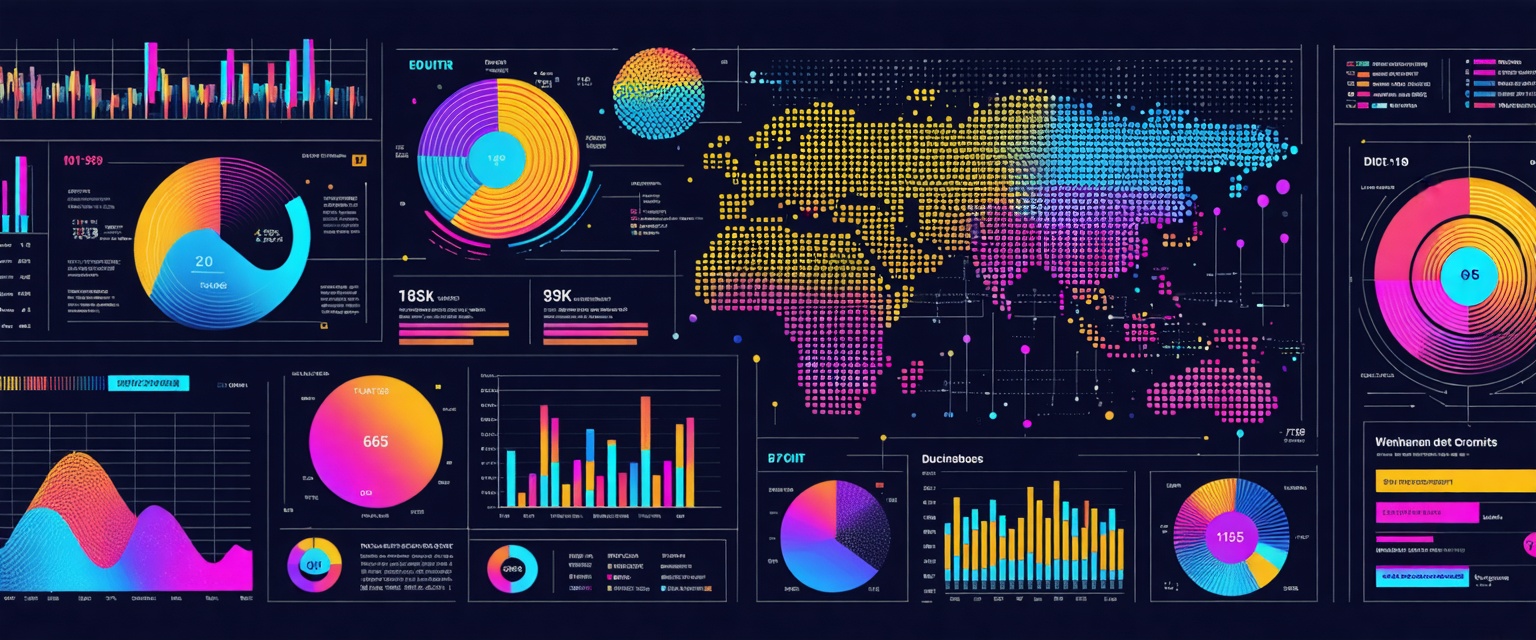All Posts
AI Agents for Real Estate
Revolutionize Property Financial Modeling: How AI Agents Streamline Sensitivity Analysis

Datagrid's AI agents automate financial modeling, data collection, and scenario testing so real estate teams can move faster with greater confidence.
If you still spend weekends stitching rent rolls, debt schedules, and market comps in Excel, you know how a single model can stall a deal. Manual workflows invite errors and ignore volatile inputs such as today's expensive financing costs so opportunities slip away before the investment committee even meets.
AI agents eliminate this bottleneck by automatically collecting data across multiple sources, building fully audited cash-flow models, and stress-testing thousands of scenarios in minutes. This data automation converts modeling time-sinks into competitive edge.
What is Property Financial Model Creation and Sensitivity Analysis?
Property financial modeling assembles comprehensive cash flow projections for real estate investments—rent, expenses, debt service, taxes—projected month-by-month across the asset's lifecycle. You start with meticulous data compilation, build cash-flow schedules, layer in valuation metrics like IRR and NPV, and structure debt to mirror your capital stack.
Early models relied on static spreadsheets. Today's platforms integrate real-time market feeds with automated calculations to create comprehensive, audit-ready frameworks. Modern AI-enabled tools pull data directly from leases and market databases instead of waiting for manual entry.
Sensitivity analysis stress-tests your model by systematically shifting variables—cap rates, rent growth, interest rates—to reveal how performance changes under different conditions. Advanced techniques like Monte Carlo simulations and multi-variable scenario grids, now common in AI-driven workflows, surface hidden risks before you present to the investment committee.
Why Financial Modeling Excellence is Critical for Acquisition Success
When you build a property model that captures every lease escalation and debt covenant, you give your investment committee the clarity to move fast. A 25-basis-point swing in rates can flip a deal from positive to negative leverage, and high financing costs make those shifts sting harder than ever — a reality highlighted by ongoing interest-rate volatility described in 2025 real-estate outlooks from industry experts and discussed in broad terms by the National Association of Realtors.
Comprehensive sensitivity analysis turns that precision into real risk intelligence. By pressure-testing rent growth, exit cap rates, and insurance premiums simultaneously, you surface the breakpoints where a deal's IRR falls below target long before capital is committed.
Skip this step and the cost is severe: capital losses, blown timelines, and damaged credibility with partners who now expect institutional rigor in every spreadsheet, as widely recognized in recent industry literature.
Economic volatility and shifting regulations demand transparent audit trails of every assumption. Regulators and LPs want to see exactly how you quantified climate-related expenses or election-year tax scenarios. Firms that meet those demands with bullet-proof, rapidly editable models not only avoid compliance headaches — they consistently outbid competitors because they can deliver conviction-laden offers hours, not days, after new data hits their inbox.
Common Time Sinks in Property Financial Modeling and Sensitivity Analysis
Despite the critical importance of accurate modeling, several workflow bottlenecks consistently drain analyst productivity and delay deal closure. Understanding these pain points reveals where automation can create the most value.
Data Collection and Market Research Bottlenecks
The first stretch of every new deal involves chasing data. Rent rolls arrive as unsearchable PDFs, historical expense ledgers live in someone's email, and market comps hide behind pay-walled research portals. Each source uses a different format, forcing you to copy-paste and re-label every line item before it touches a model.
The fragmentation creates a garbage-in, garbage-out spiral when datasets lack consistency or timeliness—a reality amplified by 2025's volatile financing and regulatory climate. Each hour spent normalizing rent schedules or validating tenant reimbursements is an hour lost from analysis, often the difference between hitting a bid deadline or watching the opportunity slip.
Model Construction and Formula Development Challenges
Once data is clean, the clock keeps ticking while you build the workbook. Crafting a twelve-year cash-flow that handles irregular lease expirations, layered debt tranches, and jurisdiction-specific tax rules demands hundreds of interlinked formulas. One broken cell cascades through IRR, equity multiple, and waterfall returns, forcing another round of audits.
Analysts juggle multiple property types, yet every asset class—industrial, multifamily, life-science—needs its own depreciation schedule and revenue logic. That juggling act transforms your role from strategist to spreadsheet mechanic; hours disappear to error-checking rather than value creation.
Scenario Planning and Sensitivity Testing Complexity
Even when the base model balances, stakeholders immediately ask, "What happens if rates jump 75 bps or rent growth stalls?" Manually layering those questions onto dozens of variables means copying entire workbooks, updating inputs, and tracking version names like "Modelv27FINAL2." The more uncertainty in interest rates, insurance costs, or environmental regulations, the more scenarios you're expected to run.
Without automated tools, you might test exit cap rates or vacancy spikes in isolation, but multi-variable stress tests remain out of reach. The result is a narrow risk picture that leaves investment committees without the full story—exposing your recommendation to second-guessing when market conditions shift.
Datagrid for Real Estate Professionals
The solution to these modeling challenges lies in intelligent automation that handles the mechanical work while preserving analytical rigor. Datagrid's AI agents transform how acquisition teams approach property analysis, eliminating the 60% of time typically spent on data processing rather than deal evaluation.
Property data lives across rent rolls, market databases, email attachments, and broker packages. Getting clean, model-ready data traditionally means hours of manual extraction, formula checking, and assumption tracking. Datagrid's AI agents handle this workflow automatically.
Connect your property management system, market databases, and document sources. Natural language processing extracts lease terms, reimbursements, and tenant details from PDFs and emails. The agents normalize currencies, dates, and naming conventions, delivering clean inputs for immediate modeling.
Need granular HVAC performance or foot-traffic telemetry? Simply stream the time-series data from aws timestream straight into the model—Datagrid normalizes the values automatically.
If your property-management database sits on google cloud mysql, Datagrid connects through a secure API and syncs rent, expense, and tenant tables in real time.
Large institutional owners already archive raw utility invoices and ESG datasets in azure data lake storage; Datagrid can ingest those files directly so analysts never touch CSV exports.
Datagrid automates key aspects of cash flow management and forecasting, streamlining processes and reducing manual spreadsheet work, although there is no clear documentation that it generates fully customized asset-type cash flow models with comprehensive debt, tax, and waterfall logic, or that every formula is explicitly test-covered and traceable. No more scrambling for buried cell references during audit requests.
Schedule automatic model refreshes on your hubspot calendar so the latest IRR results land before every Monday-morning pipeline meeting.
With pipedrive gmail integration, every signed NDA triggers a Datagrid workflow that pulls broker OM data and starts the underwriting model without human intervention.
Once a term sheet is executed through a pipedrive docusign integration, Datagrid automatically updates debt assumptions and locks the version history for compliance.
Real-time alerts on IRR swings or cap-rate changes post to the deal team via a pipedrive slack integration, keeping everyone aligned without email chains.
Market intelligence updates continuously. Cap rates, rent growth indices, and macro indicators feed directly into your models. When the 10-year Treasury moves or submarket vacancy rates shift, the impact flows through your projections immediately. You see IRR changes before opening the model.
Property insurance line items update instantly because automated claims data feeds eliminate weeks of waiting for loss-run spreadsheets from carriers.
Sensitivity analysis tools like Cactus can run thousands of scenarios simultaneously, allowing instant comparison of metrics such as cap rate expansion versus construction cost overruns. Probability-weighted outcomes help rank the variables that matter most for your specific deal. Committee meetings become strategy sessions, not calculation marathons.
Executive reporting generates automatically, maintaining consistent automated branding across every slide deck. When partners request different leverage scenarios mid-presentation, agents rerun models and refresh presentations in real time.
Integration preserves your existing workflow. Read and write industry-standard files, connect through APIs to current valuation tools, maintain established permissioning rules. Security and compliance requirements stay intact.
The transformation is measurable. Analysts complete property models in under an hour instead of two to three days. More deals get evaluated, fewer opportunities slip away during data processing delays. Investment teams enter negotiations with comprehensive risk analysis and statistical confidence.
Simplify Real Estate Tasks with Datagrid's Agentic AI
The shift from manual modeling to intelligent automation represents more than efficiency gains—it's a fundamental reimagining of acquisition workflows. Teams reduce model creation time from 3 days to 30 minutes while running thousands of scenarios simultaneously.
The result is comprehensive cash flow projections with risk assessments ready for investment committee review, allowing you to focus on strategic decisions rather than spreadsheets. Datagrid converts financial modeling from bottleneck into competitive advantage.
Create your free account today to transform your modeling workflow.


.jpeg)









